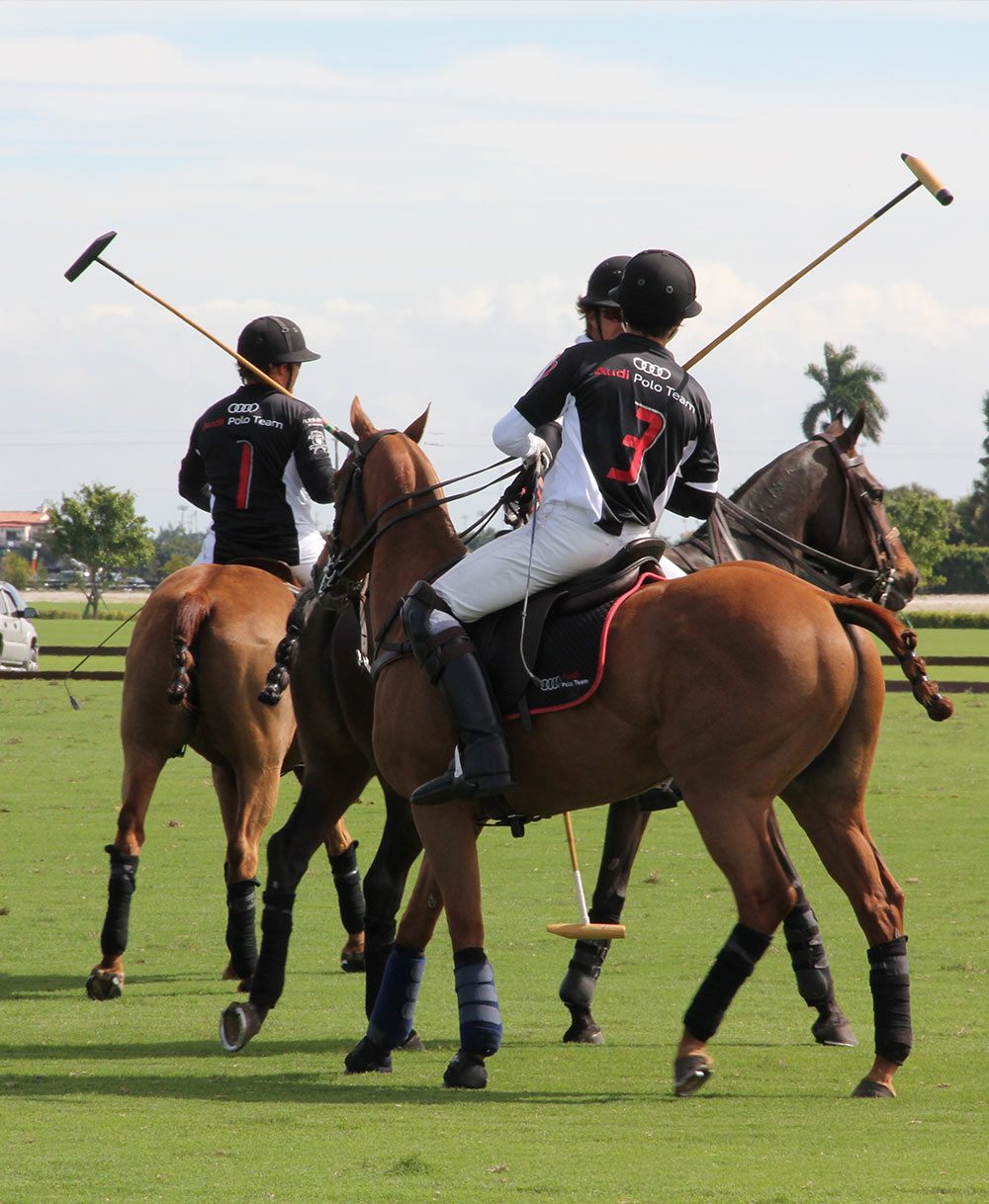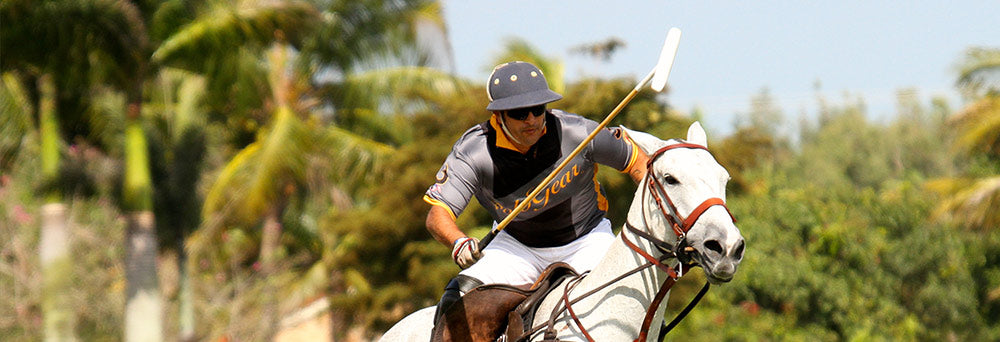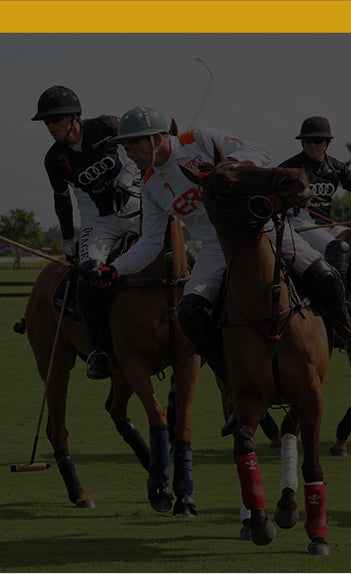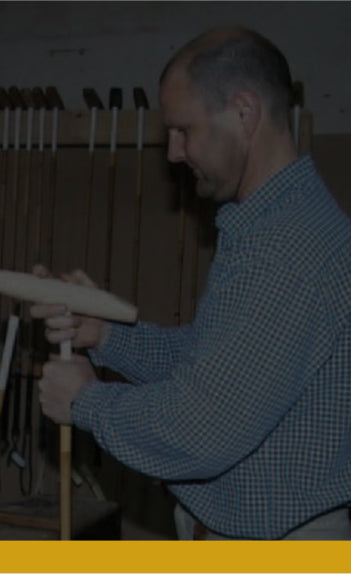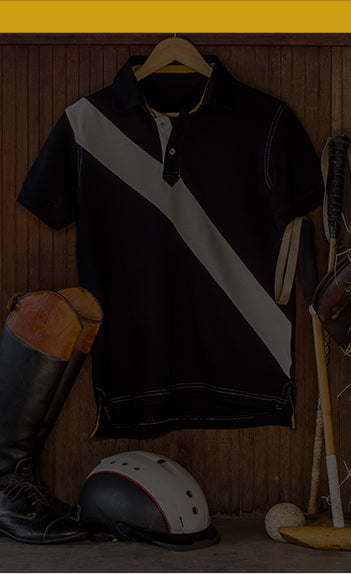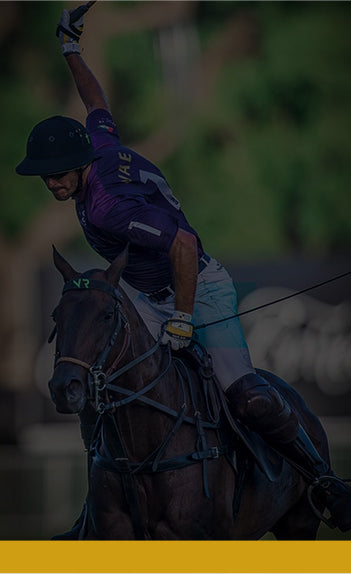POLOGEAR
mallet maker

how to choose a proper polo mallet
To choose the proper mallet it is helpful to understand the art of mallet making and the variables that go into mallet production. Through knowledge and working with experienced professionals should allow each player to undertake the necessary steps to determine the proper mallet characteristics for each’s individual style and playing requirements. Once determined your mallet maker should be able to duplicate mallets to your specification upon request.
Individual preferences:
There is no perfect mallet for everyone. Individual differences in physical characteristics, playing styles and field conditions, all are important elements in matching the proper mallet to the individual player and conditions of play. However, there are variables that all players want; properly balanced mallets, correctly cured canes, professional finishing and knowledgeable and professional staff.
It is the job of the mallet maker and sales professional to work with the player to define the individual elements and characteristics of the mallet that are best suited to the individual player. By analyzing the individual variables and defining them they are together able to determine the specific characteristics that are best suited to work for each player. To better understand the variables, we need to look at and explore the different elements of mallets and mallet making to determine which are best suited for you.
The Elements
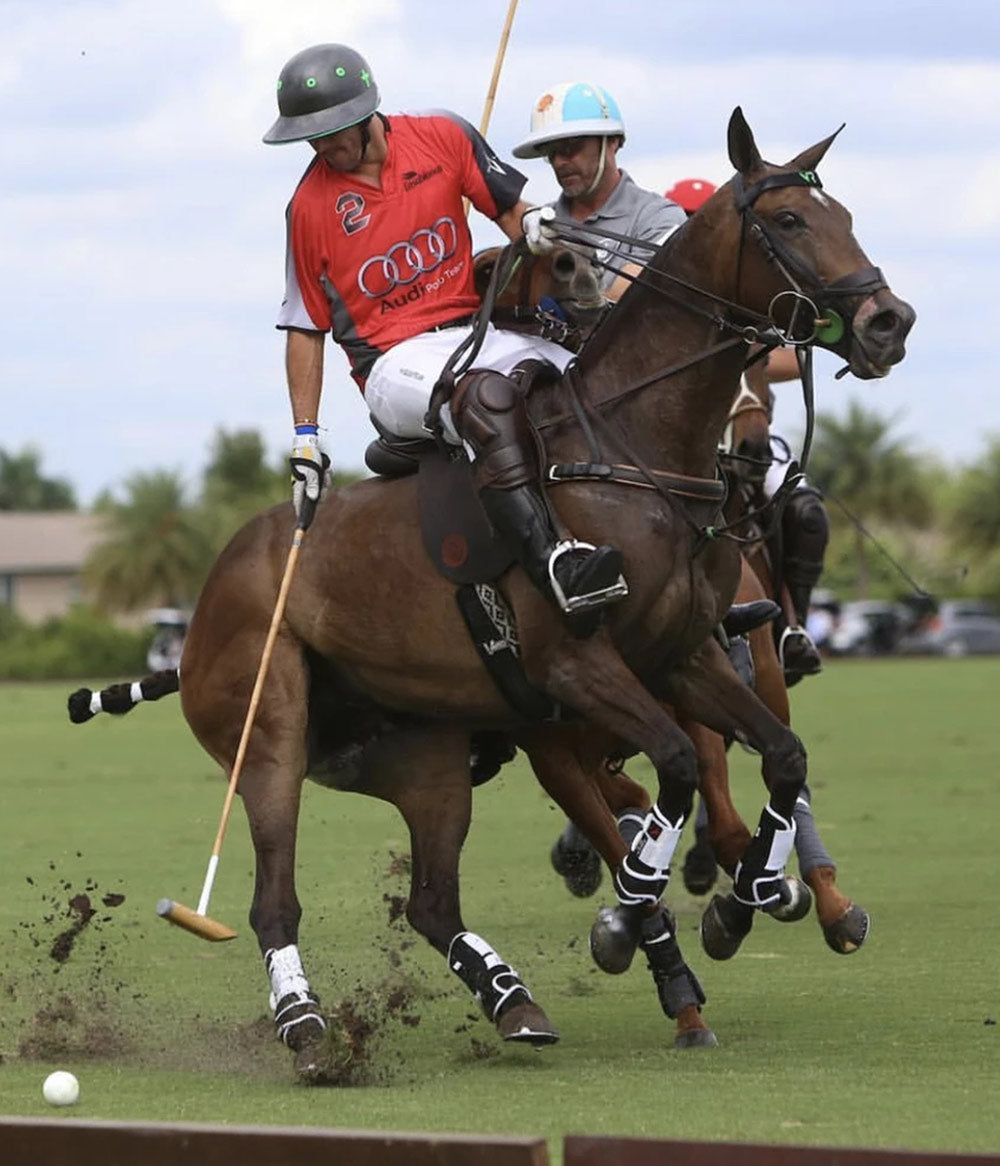
Canes
The most important variable in mallet selection is the cane. Top canes are almost solely produced from a thorny cane plant called Manau which grows in the rain forests of Southeast Asia. The Manau cane, part of the rattan family, comes in different sizes, weights, dimensions, flexes, and qualities. Many confuse rattan with bamboo which is really quite different and not suited for polo mallets. The canes are usually harvested in the dry months which provides better quality and makes them easier to cure. After cutting Manau is sorted by size with the smaller canes being used for mallets and they are cut in 9 to 10 foot lengths. They are then boiled in mixture of diesel, kerosene, palm and coconut oil then dried in the sun to cure. Additional curing is done by the mallet maker. A cane improperly cured cane be brittle with too much moisture removed or will not hold shape with too much moisture retained.
Once the cane is properly cured the first job of the mallet maker is to match the right cane with the right customer. Ten goal players have different requirements than beginners. A 220-pound back has different requirements than a 160-pound forward. Ladies have different requirements than men. Children have different needs. Individual players’ style, physique and athleticism require an individual tuning of cane characteristics to a specific player. The first element in cane selection is flexibility. Individual players prefer different mallet flexes. It is our job as mallet makers to align the proper flex of the cane to your individual playing preferences. Flex is affected by a variety of factors; the natural characteristic of the cane, its diameter, has it been properly cured, the taper of the cane, the number of knots. It is also important to remember that a mallet will open up after use. Therefore, you need to buy it slightly stiffer than you want it to end up because it becomes more flexible as the fibers loosen. The weight of the cane is another element in consideration. The natural character of the cane, and the curing process also affects weight. Where in the arc does the cane flex? How much? Most players prefer canes where the flex and the action in the cane is in the bottom 1/3 of the shaft towards the head, but not all. Again, we reiterate, individual criteria are really the most important determiner. Careful selection of cane flex and flex distribution assures maximum power and ball feel. When we make ladies mallets we are careful to select canes that are lighter in weight not just thinner in diameter. Because cane is a natural product and the density varies the weight of the individual canes in the same dimension also can vary greatly. So as a mallet marker we carefully select the proper weight for the proper customer. When we make a mallet we consider both the head weight and overall weight which combine with the flex to form the balance and feel. This skill is something that is developed after years working with top polo players and understanding what characteristics they find most important as well as from our own experience.
The other important element in cane selection is quality. We grade all our canes into only two classifications. One, we use to produce great mallets and the second to use in foot mallets or display mallets. All others are discarded. In the old days we sold different grades of mallets but now we only sell the top quality, our Professional mallets. This approach will differs greatly from mallet maker to mallet maker. Mallet selection is a personal choice, but we are available to offer expertise to try to help guide you.
The process of choosing canes starts in the jungle. PoloGear uses skilled brokers who know the mallet business and who choose the select canes to make mallets from and set them aside for PoloGear’s order. We pay a premium for this. We have exacting specifications in terms of size, taper; number of joints, criteria, straightness, that are all taken into consideration. Before shipment to the US they are again inspected. Only the select canes are sent to Polo Gear. Then thru each section of the manufacturing process we review the cane for quality specifications.
While we only offer one grade of mallets, our Professional mallet which is best quality, we have two choices to purchase; the Professional Mallet or the Custom Professional Mallet. Many of you have asked it is necessary to go to the custom grade. The difference between Professional Stock and Professional Custom is simply that in the custom order we are crafting the mallet for you from scratch to your exact specifications. We then initial, paint and varnish it as requested. The stock professional mallets are already finished and we select an appropriate one to your specifications and then finish it. So the answer to the question will depend you’re your individual requirements. Certainly, professional players and who are making their living playing polo will want to pay attention to all the details and they know exactly what they want. For other players it would depend upon your budget, aspirations, experience, and preferences. Most beginning players will not be able to appreciate the nuances and advantages of a custom Professional mallet. Our stock Professional mallets are excellently suited for most players. Traditionally the top canes (custom grade) have all been kept in the back rooms for the high goal players. Most players, once they have played with a really good mallet, that suits their style of play, notice the difference and don’t want to go back to lessor quality canes or a wide variety of flexes and weights. PoloGear has chosen to make these top canes and mallets available to all players. For any rated players there is definitely a difference from having a top cane. For these players it is our suggestion to go to the custom grade because mallets are such an important component to performance in the game. For simplicity and for new players we divide flex characteristics of canes into four flex categories; Whippy (Flexible), Medium Flexible, Medium Stiff, and Stiff. Our professional mallets can be purchased in these flexes. For custom mallets we add a fifth characteristic Medium.
Heads
The second most important individual element in mallet selection and fitting is the choice and balance of the head. Heads are made from a hardwood tree, Tipuana Tipa found only in Northern Argentina and parts of Brazil and Paraguay. We use only heads made of Argentine Tipa wood. Within Tipa there are 3 different types of Tipa that are used for heads. There is a great deal of variation between the three types as well as from individual trees. For our select aged heads we use only the white Tipa wood. The white Tipa is the densest most consistent of the Tipa and it provide for more durable and harder heads. While most players seem to prefer this some like the yellow or pink Tipa because it is softer, and its proponents say has more feel to it. The disadvantage to softer heads is they are not as durable. This is an individual customer preference and normally this level of sophistication is only understood by experienced high goal players. The density of the Tipa however has a great deal of effect on the weight of the head. The weight of the head is an important element in customizing an individual mallet for a particular customer. Weight ranges usually for lady players are usually 160-190 grams. Men usually go for 180 to 220 grams heads with some of the larger players up to 230-240 grams heads. The average head is 200 grams. The head weight consideration its only relevant when combined with the weight and flexibility of the overall mallet. To have a proper mallet you have to have a proper overall balance. The weight of the head is only relevant if the balance of the cane is correct. It is not important to be overly concerned with head weight because the balance and the flex are really the critical items and those you depend upon the craftmanship of the mallet maker. For most players it is important to know the overall weight. For this we categorize the mallets into three general weight classifications, light, medium and heavy. This is a more important barometer for most players because it encompasses both the head weight, cane weight and balance of the mallet.
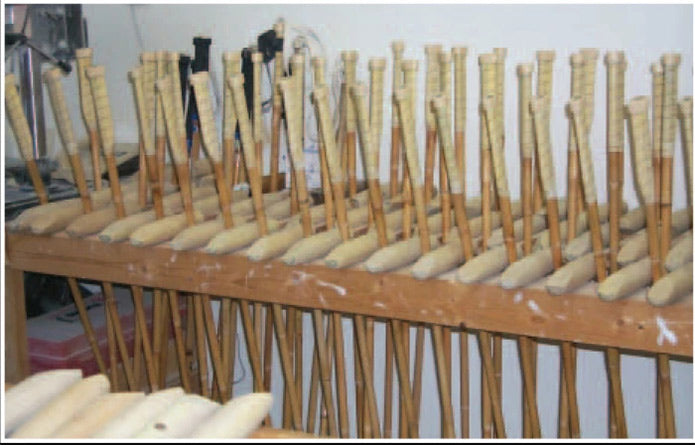
Another critical element in the head discussion is the size and shape. Polo Gear stocks two basic sizes of heads and two specialty heads. The standard head is 45 mm diameter by 230 mm and the oversized head which is a 48 mm diameter in the center by 230 mm long. Each of these heads can be purchased with a flat bottom to allow for longer grass. Your choice in size would depend upon personal preferences and on the field on which you are playing on. Here in South Florida we have Bermuda fields (or Bermuda hybrids). They are flat and short so the ball sits up for this type of field most players prefer the oversized heads. Why? You want the center of head of the mallet to hit the center of ball, because the ball is sitting on top of the grass you still have that capability with the big head. It’s almost like an oversized racquet in tennis, you have a bigger sweep spot more power and ease to hit. What happens when you get on different field condition is that the exposed part of the ball varies. In other words if you are playing on longer grass you will have less of the ball exposed that you would on the Bermuda field. In the past the RNPA were used on these fields, The RNPA is an oval head and therefore would still allow you to hit the center of the ball with the center of the head even though the ball was partially set in the grass. Today players seem to prefer the standard heads or oversized heads with the bottom of the head leveled off in these field conditions. These are the flat heads with a flat bottom. This accomplishes the same thing as the RNPA but there is more solidity and stability to the head with the flat bottom. For our customers that are playing on longer fields this we usually use the standard or oversized head with the bottom flatted off. This also allows you to get under the center of the ball for greater loft in your shots. Top players will often have mallets with several different heads for use on different field conditions
balance & Feel
The most important and most difficult area of mallet making is balancing the cane. Each cane has specific properties and a feel. This feel only comes alive if the cane is balanced with the proper head. After many years the mallet maker perfects the art of feeling, learning, evaluating and reproducing the proper balance. The correct balance enhances the cane and allows the power and natural characteristics to flourish.
Balance is determined by aligning the proper head weight with the proper cane. Each cane has a small range of head weights that can be used to produce a truly balanced feel. When balance is achieved, we maximize the natural characteristics of all the parts. Obtaining proper balance is truly an art. Some craftsman have a natural feel for a cane, others are able to develop the feel with experience and direction. Learning this skill takes many years and being able to reproduce it even longer. The artistry of proper balance and feel is what separates the masters from a carpenter. PoloGear’s master mallet maker has perfected the craft since 1988 and resides year-round in the Wellington area. You can be assured or craftsmanship and longevity. For simplicity we have designated overall weights and light, medium and heavy.
Grip
A critical element in analyzing the proper mallet is the grip size. PoloGear offers four different sizes of grips, #2, #3, #4, and #5. Grip #5 is available only in custom mallets. It is important to determine the proper grip size for you and to make sure that you have consistency of grips. As a rule of thumb #2 is a small to medium size glove. Most ladies are #2 grip. #3 is our standard grip. This would be for someone with a medium to large size glove. This would include some of the ladies with larger hands as well as most of the men. The #4 grips are for those who have an extra-large glove. We also have added a #5 grip for some players who like a very large grip, and those with very large hands. Usually players with smaller hands prefer lighter mallets and play in the front of the game. Usually the players with the extra-large hands play in the back of the game they tend to be larger players. These players use heavier canes and heads and #4 grips. It would be our suggestion that one of the first thing you do when you review your mallets, assuming that they came from many different mallet makers, is to check the grip size and make sure they are all the same. If not when you send your mallets to be repaired ask us to check the grip size and correct any that are not to specifications. It is very difficult to play consistently with mallets that have different grip sizes and characteristics.
Types of Mallets
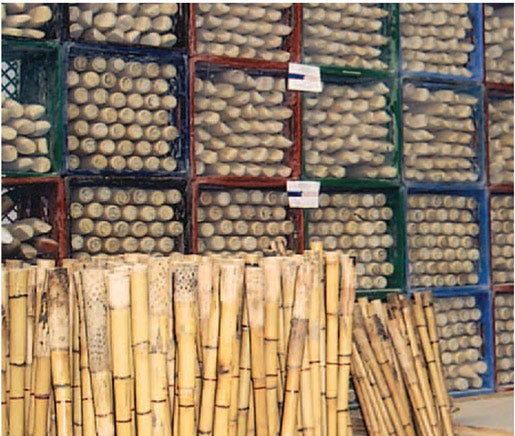
Where to Start
After this overview the best place to start is with speaking to a mallet sales professional. If you are new to polo they are going to ask certain questions about your physical characteristics to determine your individual profile. How tall are you? How much do you weigh? How would you describe your body type? Slender, medium, stocky? Are you a man, women or child? What is your glove size? How long have you been playing? What are your aspirations? Where do you play? How much? What are the field conditions? From this profile we will determine the individual characteristics of the mallet that we would recommend for you.
If you are an experienced player we will ask you to describe what you like, whippy, stiff, medium, what is your grip size, do you like a light, medium or heavy mallet, do you have a head preference, etc to select the proper canes for you. Based upon our experience in making thousands of mallets for players of all sizes, shapes and handicaps around the world we should be able to supply you with the mallets you like, anywhere in the world quickly and easily.
We keep a permanent record with all the characteristics to be able to duplicate the process upon request. We are in the process of setting up the on line ordering to make it even easier.
experienced players
The process with experienced players is easier. They know the specific characteristics they are seeking. What is easiest for both the player and the mallet maker is for the player to provide the mallet maker with a favorite mallet to duplicate. Then the mallet maker can analyze the elements and feel the player’s desires. We then have to define the elements and remember the feel to duplicate it upon request.
What the pros do
Professional players know that you get the best selection of mallets when a new shipment of canes arrives. We have standing orders with key customers to produce a certain number of mallets for them each year. When each shipment of canes arrives as we process these standing order first. Canes are selected that are suitable for the player and put aside. This allows the player and the maker the greatest opportunity to make the finest offering available. This assures the player of the best canes possible for their specific style and requirements.
Mallet repairs
Mallet repair and maintenance is a part of polo. Each season mallets should be repaired and maintained to continue to perform at a top level. Canes can last for years if properly maintained. Send us your repairs in a box and we will promptly return them like new. Each mallet cane, because of its natural characteristics, is going to have an ideal range of balance and feel. The master mallet maker knows how to reproduce the proper balance and feel for each cane. When we repair sticks it is our goal to return them to their optimum feel and balance. Mallets can be refurbished to new condition more inexpensively than purchasing new mallets. Mallet maintenance should be part of your routine. After the season return your mallets to us to refurbish and to be ready for the beginning of the next season.

